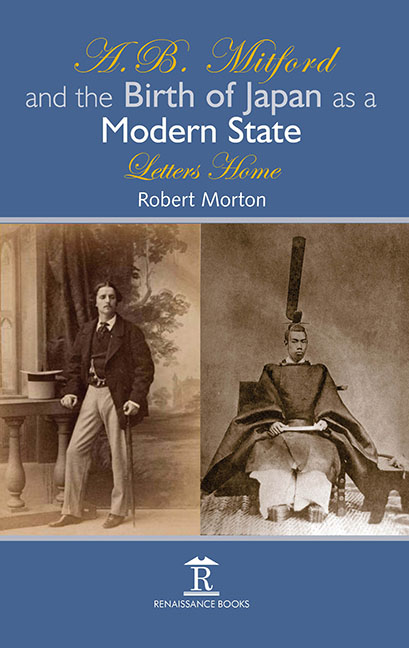Book contents
- Frontmatter
- Contents
- Foreword
- Preface
- List of Plates
- 1 Yokohama: October – December 1866
- 2 Edo: October 1866 – May 1867
- 3 The Shogun: January – April 1867
- 4 An Adventurous Journey: July – August 1867
- 5 The Birth of the New Japan: October 1867 – March 1868
- 6 Kyoto: February – March 1868
- 7 Osaka: March – July 1868
- 8 Tokyo: August 1868 – January 1870
- 9 After Japan: 1870 – 1906
- 10 The Return: February – March 1906
- 11 The Legacy: 1906 –
- Notes
- Bibliography
- Acknowledgements
- Index
4 - An Adventurous Journey: July – August 1867
Published online by Cambridge University Press: 30 April 2022
- Frontmatter
- Contents
- Foreword
- Preface
- List of Plates
- 1 Yokohama: October – December 1866
- 2 Edo: October 1866 – May 1867
- 3 The Shogun: January – April 1867
- 4 An Adventurous Journey: July – August 1867
- 5 The Birth of the New Japan: October 1867 – March 1868
- 6 Kyoto: February – March 1868
- 7 Osaka: March – July 1868
- 8 Tokyo: August 1868 – January 1870
- 9 After Japan: 1870 – 1906
- 10 The Return: February – March 1906
- 11 The Legacy: 1906 –
- Notes
- Bibliography
- Acknowledgements
- Index
Summary
AFTER HIS RETURN to Edo, Mitford did not have to wait long to be on his travels again. Parkes never liked sitting in the Legation, especially when the summer heat made it unbearable. Rather he would spend ‘all day plotting and scheming to get up a sensation’, in the words of Dr Willis. Mitford told his father that ‘the expedition promises to be enjoyable’ – he enjoyed any kind of travelling, even if it was with Parkes – ‘but, oh!’, ‘the vomiting that I look forward to and the heat and the discomfort of being on board ship’.
The first part of their journey took them north to Hakodate on Ezo (now Hokkaido), a voyage of four days. It was Japan's wild frontier – almost unexplored by Westerners or the Japanese themselves beyond the southernmost part. Its climate was tough; it would have been pleasantly cool in the summer, but it had long, harsh winters. Ezo was the home of indigenous people called Ainu who had a distinct language and culture which would be systematically suppressed after Ezo became incorporated into Japan in 1869. Like nearly all Victorian travellers, Mitford saw aboriginal people as a curiosity and was keen to observe them, rather than interact with them as fellow human beings. Satow recorded that their women were
extremely ugly; they tattoo all round the mouth so that it looks four times its real size, their hair is dirty, unkempt and hangs in loose masses over their shoulders, or is tied up with a filthy rag … But the men are handsome, or rather have a striking appearance to people who admire beards and moustaches. Their eyes and noses are also good, and they are covered with thick black hair on the legs and breast, not quite so bad as bears.
Parkes had no interest in the people and was, as ever, focused on the business in hand, in this case, how the coal mines there could be developed and a breakwater built to allow foreign ships to dock to load the coal.
- Type
- Chapter
- Information
- A. B. Mitford and the Birth of Japan as a Modern StateLetters Home, pp. 60 - 75Publisher: Amsterdam University PressPrint publication year: 2017



